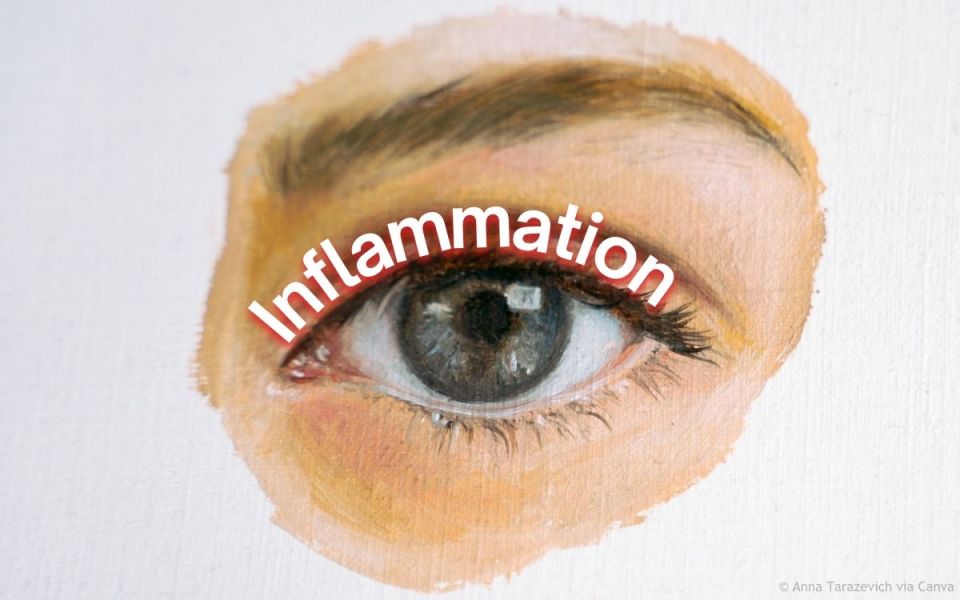Eye-Opening Facts About Blepharitis

Eyelids are crucial for protecting our eyes and eye health. They keep our eyes protected, lubricated, and expressive. Sometimes, though, eyelids aren’t “looking” out for our best interests. They become inflamed and irritate the eye, a condition called blepharitis. Let’s break down the word blepharitis; it is from the Greek word blépharon, meaning eyelid, and the suffix -itis, indicating inflammation. Together, blepharitis means inflammation of the eyelid. It affects people of all ages, genders, and ethnicities. Eye specialists find around ⅓ to ½ of their patients have signs of blepharitis, though most patients exhibit few or no symptoms. Those that do have symptoms can have a decreased quality of life. Symptoms include:
- Eye irritation and discomfort
- Burning
- Itching
- Pain
- Light sensitivity
- Visual disturbances
- Redness
- Swelling
- Dry eye
- Changes to tears or tear duct function
Let’s zoom in a little bit on these symptoms to search for how this might happen. Since eyelid inflammation is not defined as a specific etiology, there are many possible causes for blepharitis. The three most popular divisions of blepharitis are staphylococcal (caused by staphylococcal bacteria), seborrheic (dysfunction of seborrheic glands), and meibomian gland dysfunction. Seborrheic glands produce an oily substance that protects hairs (like eyelashes) and meibomian glands produce a fluid that keeps tears from evaporating and eyes from drying out. Dysfunction of these glands and staphylococcal infection are associated with many conditions. It isn’t always clear which of these is a cause and which is an effect, but associated conditions include:
- Dry eye
- Skin conditions, like Rosacea and Dandruff
- Conjunctivitis
- Infections from bacteria, viruses, and fungi
- Parasites, like mites
- Immune conditions
- Eye tumors
- Trauma and surgery
Any of these potential triggers can cause inflammation of the eyelid. Inflammation is one of the main ways the body fights potential infections. It is effective in fighting off many invaders but can inadvertently damage healthy tissue. Additionally, chronic inflammation (such as is found in chronic blepharitis) damages healthy tissue while failing to control infection. The above conditions may cause blepharitis, but inflammation may also be the primary cause. It is difficult to separate the directionality with blepharitis.
So are we able to see a solution to blepharitis? The condition is complex and has many potential exacerbating triggers and causes, making it difficult to find solutions. In fact, there are no known cures. So far the FDA has approved only one medication, which targets a specific mite-caused blepharitis. Since there are so many potential causes of blepharitis, diagnosis and accurate classification are the first steps to treatment. An optometrist (or ophthalmologist) can classify the type of blepharitis present, which guides possible treatments. This is critical since many solutions (such as antibiotics) do not work on all types of blepharitis (like viral infections). If there is an underlying condition causing blepharitis that can be treated, treatment should start there. Since there are no cures for blepharitis, symptomatic relief is the standard of care to improve patient quality of life. One of the most important steps is to improve eyelid hygiene around an inflamed eyelid. This may include daily use of artificial tears, a warm compress, and eye-safe cleaning agents. These solutions are cheap and provide relief, but have low adherence since they are time consuming and inconvenient. The next steps may include off-label medications prescribed by an eye doctor. These may be topical antibiotic creams or ointments, systemic antibiotics that affect the whole body, or topical immunomodulators, like corticosteroids. In the future, clinical trials may give us more specific medications that target the eyelid and its inflammatory reaction to provide relief. Let’s keep looking forward to a bright tomorrow.
Staff Writer / Editor Benton Lowey-Ball, BS, BFA
Click Below for ENCORE Research Group's Enrolling Studies
References
Amescua, G., Akpek, E. K., Farid, M., Garcia-Ferrer, F. J., Lin, A., Rhee, M. K., ... & Mah, F. S. (2019). Blepharitis preferred practice pattern®. Ophthalmology, 126(1), P56-P93. https://www.aaojournal.org/article/S0161-6420(18)32645-9/
Lemp, M. A., & Nichols, K. K. (2009). Blepharitis in the United States 2009: a survey-based perspective on prevalence and treatment. The ocular surface, 7(2), S1-S14. https://doi.org/10.1016/S1542-0124(12)70620-1
McCulley, J. P., Dougherty, J. M., & Deneau, D. G. (1982). Classification of chronic blepharitis. Ophthalmology, 89(10), 1173-1180. https://www.sciencedirect.com/science/article/abs/pii/S0161642082346692
National Eye Institute. (November 15, 2023), Blepharitis. National Institute of Health. Accessed 1 July, 2024. https://www.nei.nih.gov/learn-about-eye-health/eye-conditions-and-diseases/blepharitis
Putnam, C. M. (2016). Diagnosis and management of blepharitis: an optometrist’s perspective. Clinical optometry, 71-78. https://doi.org/10.2147/OPTO.S84795
Tong, C. M., & Kurji, K. (2021). Blepharitis: Overview and Classification. Cornea, E-Book, 5, 308-310.



